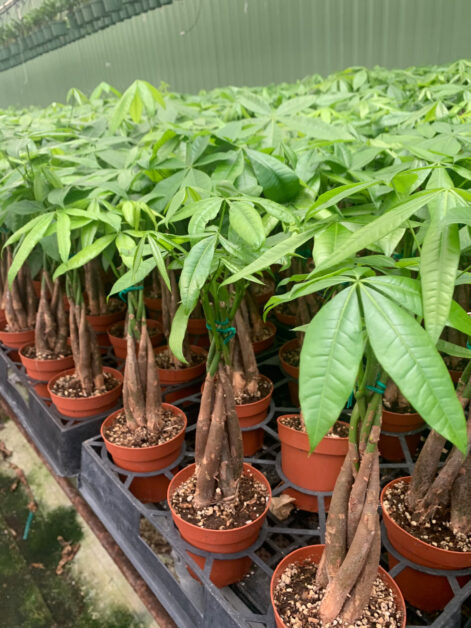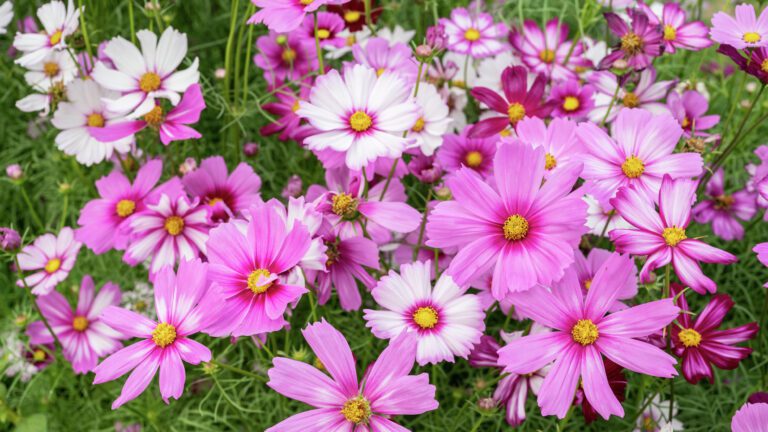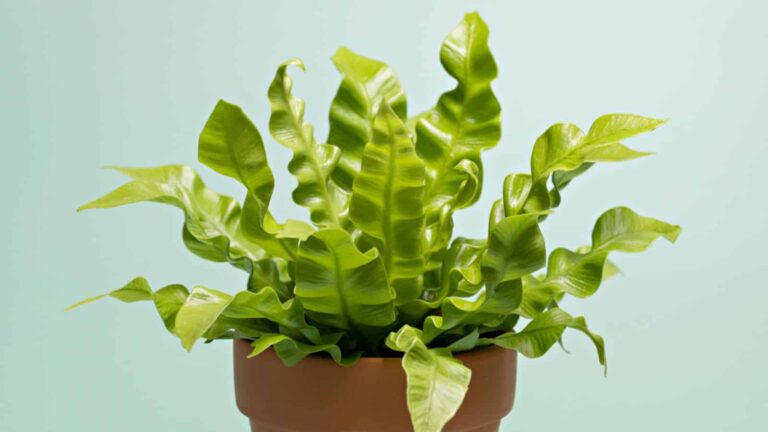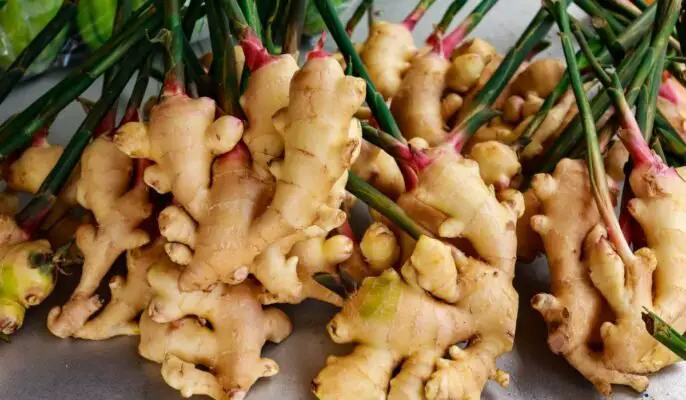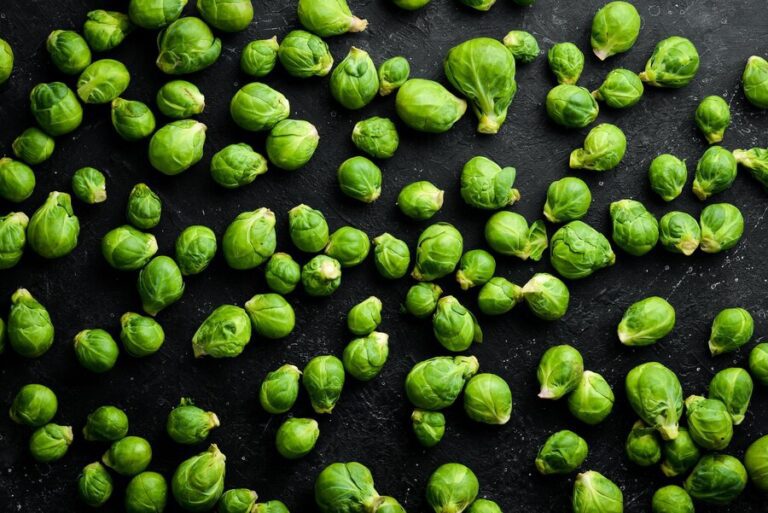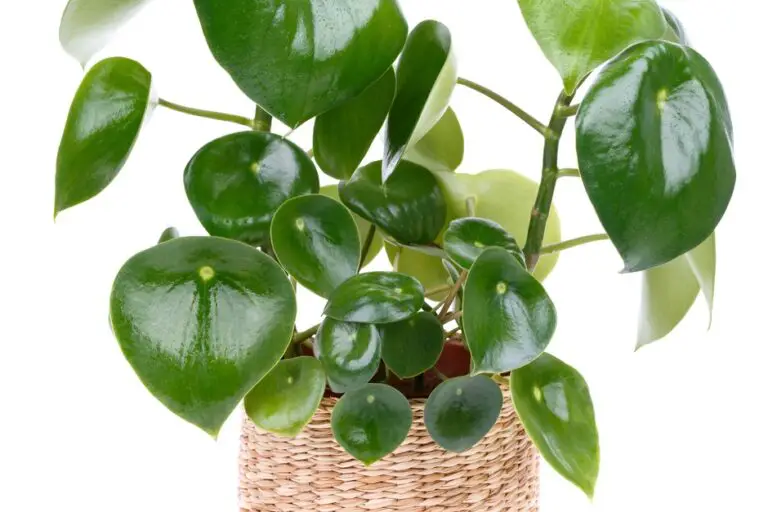Money Tree Plant: How to Grow and Care for Pachira Aquatica
Table of Contents
Understanding the Pachira Aquatica: A Guide to the Money Tree Plant
The Pachira Aquatica, commonly known as the Money Tree Plant, is a fascinating and popular addition to any indoor or outdoor space. Its distinct braided trunk and lush, green leaves make it visually appealing, while its reputation for bringing good luck and prosperity adds to its allure.
Native to Central and South America, the Money Tree Plant has an interesting history and cultural significance. In Feng Shui, it is believed to promote positive energy flow and financial abundance. Despite its name, this plant is not actually a tree but a member of the mallow family. It can grow up to six feet tall indoors and even taller in its natural habitat.
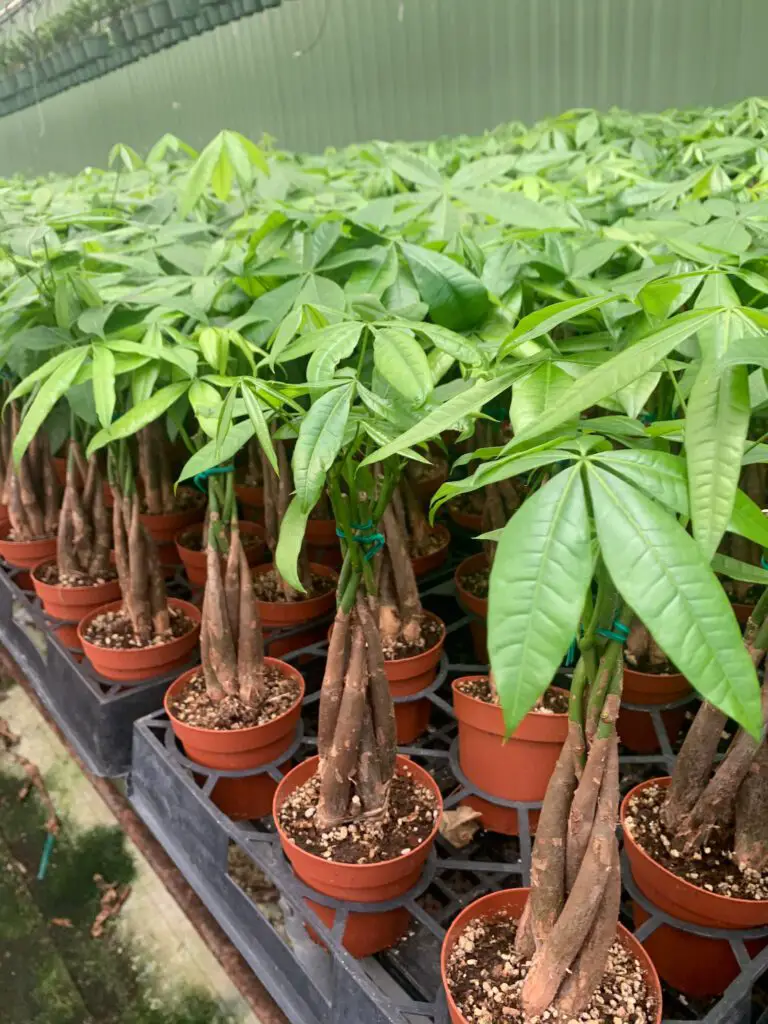
Caring for a Money Tree Plant requires some knowledge and attention to detail. Providing the right environment, choosing the appropriate pot, and using the correct soil are essential for its growth and well-being. Additionally, understanding its watering needs, fertilizing schedule, and pruning techniques can make a significant difference in maintaining a healthy and vibrant Money Tree Plant. In this guide, we will delve into all these aspects and more, equipping you with the knowledge and skills to nurture a flourishing Money Tree Plant in your own space.
The Ideal Environment for Your Money Tree Plant
To ensure the optimal growth and health of your Money Tree plant, it is important to create the ideal environment that mimics its natural habitat. This tropical plant thrives in warm, humid climates, so it is crucial to provide it with the right conditions to flourish.
First and foremost, temperature plays a vital role in the well-being of your Money Tree. Ideally, maintain a temperature range between 65°F and 75°F (18°C to 24°C) during the day, and slightly cooler temperatures at night. Avoid exposing your plant to abrupt temperature changes or drafts, as it can result in stress and cause leaf damage.
In addition to temperature, humidity levels are crucial for the Money Tree’s success. Aim for a humidity range of 50% to 60% to replicate its native environment. If the air in your home is dry, consider using a humidifier or placing a tray filled with water near the plant to increase moisture in the air. Regular misting can also help maintain proper humidity levels, but avoid misting directly onto the leaves, as it can lead to fungal diseases.
Furthermore, your Money Tree plant thrives in bright, indirect light. While it can tolerate low light conditions, it may lead to leggy growth and sparse foliage. Place your plant near a north-facing window or provide filtered sunlight through curtains or blinds. Avoid exposing it to direct sunlight, as it can scorch the leaves. Regularly rotate the plant to ensure even growth and to prevent it from leaning towards the light source.
By creating an environment with consistent temperature, proper humidity levels, and suitable light conditions, you can provide an ideal home for your Money Tree plant to thrive and bring a touch of green beauty to your space.
Choosing the Right Pot for Your Pachira Aquatica
When it comes to choosing the right pot for your Pachira Aquatica, there are a few important factors to consider. First and foremost, you’ll want to select a pot that is the appropriate size for your plant. The root system of the Pachira Aquatica requires room to grow, so it’s crucial to choose a pot that allows for adequate root development. Generally, a pot with a diameter that’s 2-4 inches larger than the diameter of the plant’s root ball is recommended.
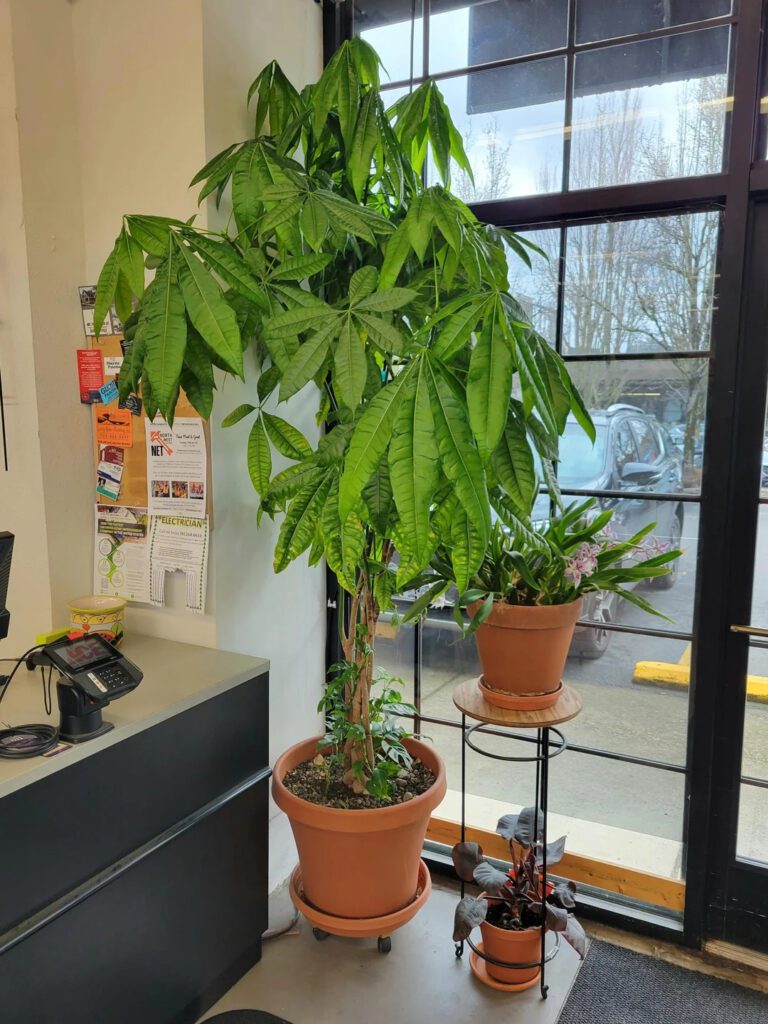
In addition to size, you’ll want to think about the material of the pot. Pots made from materials such as terracotta, ceramic, or fiberglass are popular options for growing Pachira Aquatica. Terracotta pots are known for their breathability, allowing excess moisture to evaporate from the soil. Ceramic pots provide a stylish and durable option, while fiberglass pots are lightweight and resistant to cracking or breaking. It’s important to avoid pots with poor drainage, as excessive moisture can lead to root rot and other issues.
Soil Requirements for Growing a Healthy Money Tree Plant
To ensure the healthy growth of your Money Tree Plant, it is crucial to provide the right soil conditions. The Pachira aquatica thrives best in well-drained soil that is rich in organic matter. A combination of peat moss, perlite, and vermiculite is ideal for creating a loose and well-aerated soil mix.
The soil pH should be slightly acidic to neutral, with a range between 6.0 and 7.0. This pH range allows for optimal nutrient absorption and prevents the buildup of harmful salts that can hinder growth. Testing the soil pH periodically and adjusting it if necessary will help maintain the health of your Money Tree Plant. Additionally, incorporating slow-release fertilizers into the soil mix can provide a steady supply of nutrients to support healthy growth. Remember to follow the recommended dosage instructions to avoid over-fertilization, which can damage the plant’s roots.
Watering Tips for Your Pachira Aquatica
Watering is an essential aspect of caring for your Pachira aquatica, as it greatly influences the overall health and well-being of the plant. Proper watering practices will help maintain optimal growth and prevent issues such as root rot or dehydration. When it comes to watering your Pachira aquatica, it is crucial to strike a balance between providing enough moisture and avoiding overwatering.
This table outlines watering tips for Pachira Aquatica, commonly known as the Money Tree:
| Watering Tips | Description |
|---|---|
| Moderate Watering | Water thoroughly but allow the top inch of soil to dry between waterings. Avoid waterlogging. |
| Seasonal Variations | Adjust watering frequency in winter; reduce water as the plant’s growth slows down. |
| Water Quality | Use filtered or distilled water to avoid mineral buildup; avoid fluoride-rich or chlorinated water. |
| Drainage | Ensure pots have drainage holes to prevent water accumulation at the bottom. |
| Leaf Response | Watch for drooping or yellowing leaves; adjust watering if signs of overwatering or underwatering. |
| Moisture Meter | Consider using a moisture meter to gauge soil moisture levels accurately. |
| Watering Schedule | Develop a consistent watering schedule based on environmental conditions and plant needs. |
| Mist Leaves Occasionally | Mist leaves occasionally to enhance humidity levels, especially in dry indoor environments. |
To determine when it is time to water your Money Tree, you should first check the moisture level of the soil. Insert your finger about an inch deep into the soil; if it feels dry at this depth, it is time to water. However, if the soil feels slightly moist, it is best to wait a few more days before watering again. Remember, overwatering can be detrimental to the health of your Pachira aquatica, as it can lead to root rot. It is better to err on the side of caution and underwater rather than overwater your Money Tree plant. Additionally, ensure that the pot or container has sufficient drainage holes to allow excess water to escape, preventing waterlogged conditions.
Fertilizing Your Money Tree Plant: Dos and Don’ts
Fertilizing your Money Tree plant is an essential part of its overall care and maintenance. By providing the proper nutrients, you can encourage healthy growth and a lush appearance. However, it’s important to follow certain guidelines to ensure you’re fertilizing your plant correctly. Here are some dos and don’ts to keep in mind:
Dos:
1. Do choose a balanced fertilizer: Look for a well-balanced fertilizer specifically formulated for indoor plants. A balanced fertilizer contains equal amounts of nitrogen (N), phosphorus (P), and potassium (K), along with other essential micronutrients. This will provide your Money Tree plant with the necessary nutrients for growth and development.
2. Do fertilize during the growing season: The growing season for Money Tree plants typically occurs during spring and summer. This is the best time to fertilize your plant, as it will be actively growing and in need of additional nutrients. Follow the manufacturer’s instructions for proper application rates and frequency.
3. Do dilute the fertilizer: It’s important not to over-fertilize your Money Tree plant, as this can lead to nutrient burn and other issues. To avoid this, dilute the fertilizer with water according to the package instructions. This will ensure a balanced and gentle application of nutrients to your plant.
Don’ts:
1. Don’t fertilize during dormancy: Money Tree plants go through a period of dormancy, usually during the winter months. During this time, the plant’s growth slows down, and it requires less fertilizer. Avoid fertilizing your Money Tree plant during dormancy to prevent nutrient build-up in the soil.
2. Don’t over-fertilize: Over-fertilizing can be just as harmful as under-fertilizing. Too much fertilizer can cause the plant’s roots to burn and damage the overall health of the plant. Follow the recommended application rates and avoid the temptation to add extra fertilizer, thinking it will promote faster growth.
3. Don’t neglect other care requirements: While fertilizing is important, it should not be the sole focus of your Money Tree plant’s care. Remember to also provide proper watering, adequate sunlight, and occasional pruning to keep your plant thriving. Fertilizer should complement a comprehensive care routine rather than replace other essential practices.
Pruning and Shaping Your Pachira Aquatica
Pruning and shaping your Pachira Aquatica is essential for maintaining its health and aesthetics. Regular pruning helps to control the growth of your Money Tree plant and encourages the development of a desirable shape. It also helps to remove any dead or damaged foliage, promoting overall plant vigor.

When it comes to pruning your Pachira Aquatica, start by assessing the overall shape and size you desire. This will determine the approach you take. If you want a more compact and bushy appearance, prune the top branches to encourage lateral growth. On the other hand, if you prefer a taller and more tree-like form, selectively prune the lower branches to create a trunk-like structure.
It’s important to use clean, sharp pruning tools to avoid crushing or tearing the plant tissues. Before making any cuts, sterilize the blades with rubbing alcohol to prevent the spread of diseases. When trimming, make clean cuts just above the node, where new growth is likely to occur. Avoid removing more than 1/3 of the plant’s foliage at once to minimize stress.
By regularly pruning and shaping your Pachira Aquatica, you can not only maintain its overall appearance but also enhance its health and vitality. Stay tuned for more tips on caring for your Money Tree plant!
Propagating the Money Tree Plant: Step-by-Step Guide
Propagating the Money Tree Plant: Step-by-Step Guide
1. Propagation by Stem Cutting:
One popular method for propagating the Money Tree Plant is through stem cuttings. To begin, carefully select a healthy stem with at least two pairs of leaves. Using a sharp, sterilized knife or pruning shears, make a clean cut just below a node, which is the joint where the leaf or branch emerges from the stem. Remove the lower leaves, leaving only the top pair intact. Dip the cut end in a rooting hormone powder to promote root development, and then plant the cutting in a well-draining potting mix. It’s important to keep the soil consistently moist but not overly wet during the rooting process. Place the cutting in a warm, bright area, away from direct sunlight. Within a few weeks, you should start to see roots forming, indicating successful propagation.
2. Propagation by Air Layering:
Air layering is another effective technique for propagating the Money Tree Plant. Start by selecting a healthy, mature branch from the parent plant. Remove a small section of bark, making a horizontal cut just below a node. Apply a layer of moist sphagnum moss or a rooting medium, and wrap it around the exposed area. Enclose the moss in a plastic bag, ensuring it remains securely in place. Over time, new roots will emerge from the cut section, growing into the moss. Once the roots are well-established, usually after a few months, carefully remove the new plantlet from the parent plant and pot it in a suitable growing medium. This method allows for direct root development while the plant is still attached to the parent, increasing success rates and minimizing stress on the cutting.
Dealing with Common Pests and Diseases of Pachira Aquatica
The Money Tree Plant, or Pachira Aquatica, is generally a hardy and resilient plant. However, it is not completely immune to pests and diseases. Knowing how to deal with common issues that can occur with this plant is essential for maintaining its health and beauty.
One of the most common pests that can affect the Money Tree Plant is mealybugs. These small, white insects are typically found hiding in the crevices of the leaves and stems. To combat mealybugs, it is important to regularly inspect your plant and remove any visible bugs manually. You can also wipe the leaves with a mixture of mild dish soap and water to help eliminate these pests. If the infestation is severe, you may need to resort to using insecticidal soap or neem oil. It is crucial to follow the instructions on the product carefully and further consult with a professional if needed.
Another common issue that can plague the Money Tree Plant is root rot, caused by overwatering or poor drainage. This can lead to the roots becoming mushy and discolored, eventually leading to the death of the plant. To prevent root rot, ensure that your Money Tree Plant is potted in a well-draining soil mix and that the pot has proper drainage holes. Be cautious not to overwater the plant and allow the soil to dry out slightly between waterings. If your Money Tree Plant does develop root rot, it may be necessary to trim away the affected roots and repot the plant in fresh soil to promote new root growth.
– Regularly inspect the plant for mealybugs and manually remove them
– Wipe the leaves with a mixture of mild dish soap and water to eliminate mealybugs
– Consider using insecticidal soap or neem oil for severe infestations, following instructions carefully
– Prevent root rot by using well-draining soil mix and pots with proper drainage holes
– Avoid overwatering and allow the soil to dry out slightly between waterings
– Trim away affected roots if root rot occurs and repot in fresh soil to promote new root growth.
How to Prevent and Treat Overwatering Issues in Your Money Tree Plant
Overwatering can be detrimental to the health and growth of your Money Tree plant. It is important to understand the signs of overwatering and take immediate action to prevent and treat the issue. One of the most common signs of overwatering is yellowing or wilting leaves. This occurs because the roots of the plant become waterlogged, leading to a lack of oxygen and nutrient uptake. Additionally, you may notice that the soil feels constantly wet or water accumulates in the pot’s drainage tray.
Want to learn more? Go watch this video!
To prevent overwatering, it is crucial to establish a proper watering routine. The key is to allow the top inch of the soil to dry out before watering again. This can be easily determined by sticking your finger into the soil and checking for moisture. It is also advisable to use well-draining soil and pots with drainage holes to ensure excess water can escape. Furthermore, consider the environmental conditions such as humidity and temperature, as they can affect the rate of water absorption. Remember, it is always better to underwater than overwater your Money Tree plant.
Sunlight Requirements for Optimal Growth of Pachira Aquatica
The Pachira Aquatica, commonly known as the Money Tree Plant, is a tropical species that thrives in bright, indirect sunlight. Providing the optimal amount of sunlight is crucial for the healthy growth and development of this plant. The Money Tree Plant requires medium to high light levels, but direct sunlight should be avoided as it can scorch the leaves.
If you are growing your Pachira Aquatica indoors, placing it near a window that receives bright, filtered light is ideal. A south or west-facing window is often the best choice, as it provides the required intensity of light without exposing the plant to direct sun rays. However, if your home doesn’t have an adequately bright window, you can supplement the plant’s light intake by using artificial grow lights. LED grow lights are a popular choice among indoor gardeners for their energy efficiency and ability to produce the right spectrum of light for plant growth.
In addition to the right amount of light, it’s important to consider the duration of exposure. Money Tree Plants should receive around 6 to 8 hours of light each day for optimal growth. If the plant doesn’t receive enough light, it may become leggy and weak, with smaller leaves. On the other hand, if it receives too much light, the leaves might turn yellow and start to wilt. Finding the right balance is essential to ensure your Pachira Aquatica thrives and flourishes in its environment.
Repotting Your Money Tree Plant: When and How to Do It
Repotting your money tree plant is an essential step in ensuring its healthy growth and development. As your plant grows, it will eventually outgrow its current pot, and repotting becomes necessary to provide it with adequate space for its expanding root system. But when is the right time to repot, and how should you go about doing it?
Here’s the video for taking care of your Money Tree plant, Go watch this:
Firstly, it’s important to observe your money tree plant and look for signs that it needs repotting. If you notice that the roots are growing out of the drainage holes, or if the plant is becoming top-heavy and unstable, these are indications that it’s time for a larger pot. Typically, repotting is recommended every 1-2 years, preferably during the spring when the plant is entering its active growth phase.
When it comes to the actual repotting process, here are the steps to follow. Start by selecting a new pot that is one size larger than the current pot. Ensure it has drainage holes to prevent waterlogging. Prepare a well-draining potting mix, preferably one that is specifically formulated for houseplants. Gently remove the money tree plant from its old pot, being careful not to damage the roots. Loosen the root ball and remove any excess soil, particularly if it’s compacted. Place the plant in the center of the new pot, making sure the top of the root ball is level with the rim of the pot. Fill in the gaps with fresh potting mix, lightly pressing it down to secure the plant. Finally, water the plant thoroughly and allow any excess water to drain away.
Creating a Balanced Humidity Level for Your Pachira Aquatica
Maintaining a balanced humidity level is crucial for the healthy growth of your Pachira Aquatica, commonly known as the Money Tree plant. This tropical plant thrives in environments with moderate to high humidity, mimicking its natural habitat. By understanding the ideal humidity requirements and implementing simple techniques, you can create a favorable environment for your Money Tree plant to flourish.
To begin with, it is essential to note that the optimal humidity range for your Pachira Aquatica falls between 50% to 60%. While this may seem high, maintaining the right moisture levels can be achieved by utilizing several methods. One effective approach is to use a humidifier. Placing a humidifier near your plant will help regulate the humidity levels and prevent the air from becoming too dry, especially in dry climates or during winter months when indoor heating can decrease moisture in the air. Another method is to group your Money Tree plant with other moisture-loving plants. As plants release moisture through their leaves, clustering them together can create a microclimate that increases humidity around your Pachira Aquatica. Additionally, misting the leaves regularly with distilled water can provide an extra boost of moisture. However, ensure not to overdo it, as excessive misting can lead to waterlogged soil and potential fungal issues.
Tips for Training Your Money Tree Plant to Grow in Desired Directions
Training your Money Tree plant to grow in desired directions is an important aspect of shaping its overall appearance. By guiding its growth, you can create a visually appealing and well-proportioned plant that fits perfectly into your indoor or outdoor space. Here are some tips to help you achieve the desired results:
1. Use supports: As your Money Tree plant grows, you can use supports such as stakes, trellises, or bamboo poles to direct its growth. Gently tie or secure the stems to the supports using soft ties or twine, being careful not to apply too much pressure that may damage the plant. This method is particularly useful if you want your Money Tree plant to grow upwards or in a specific direction.
2. Prune strategically: Regular pruning is crucial for maintaining the shape and size of your Money Tree plant. When pruning, focus on removing any unwanted or wayward branches to encourage growth in the desired directions. Make clean cuts just above a leaf node or bud to promote new growth. Keep in mind that pruning should be done during the plant’s active growth phase for optimal results.
How can I train my money tree plant to grow in a desired direction?
To train your money tree plant to grow in a desired direction, you can use pruning and shaping techniques. By regularly trimming the branches and redirecting their growth, you can guide the plant to grow in the desired direction.
Can I use support structures to train my money tree plant?
Yes, you can use support structures like stakes or trellises to train your money tree plant. By gently tying the branches to the support, you can encourage the plant to grow in a specific direction.
Is it possible to train a money tree plant to grow in a spiral shape?
Yes, it is possible to train a money tree plant to grow in a spiral shape. This can be achieved by carefully bending the branches and securing them in a spiral pattern using soft ties or clips.
How often should I check and adjust the training of my money tree plant?
You should regularly check and adjust the training of your money tree plant, especially during the growing season. Aim to check and make any necessary adjustments every few weeks to ensure the plant continues to grow in the desired direction.
Are there any risks associated with training a money tree plant?
While training a money tree plant, there is a risk of accidentally damaging or breaking branches. It is important to be gentle and careful when bending or securing the branches to avoid any harm to the plant.
Can I train a mature money tree plant, or is it better to start with a young plant?
It is easier to train a young money tree plant as it is more flexible and adaptable. However, you can still train a mature money tree plant, but it may require more time and effort to reshape its growth.
What should I do if my money tree plant is not responding to training?
If your money tree plant is not responding to training, it may be due to various factors such as improper technique, poor health, or genetic limitations. In such cases, it is best to reassess your training methods and ensure that the plant’s basic care needs are being met.
Can I train my money tree plant to grow in multiple directions simultaneously?
While it is possible to train a money tree plant to grow in multiple directions simultaneously, it may result in a less visually appealing and structurally stable plant. It is generally recommended to focus on training the plant in one desired direction for optimal growth.
Are there any specific tools or equipment that I need for training my money tree plant?
No, there are no specific tools or equipment required for training a money tree plant. However, having soft ties or clips can be helpful for securing branches to support structures without damaging them.
Is it necessary to train a money tree plant to grow in a specific direction?
No, it is not necessary to train a money tree plant to grow in a specific direction. The natural growth pattern of the plant can be quite attractive on its own. Training is primarily done for aesthetic purposes or to fit the plant into a specific space or design.

Pallavi Gupta is a burgeoning writer at SouthElMonteHydroponics, blending her passion for data analysis with a keen interest in biotechnology. Currently pursuing a Bachelor’s in Biotechnology at Amity University, Pallavi delves into the intricacies of life sciences while gaining hands-on experience in the exciting world of data analysis. Her unique background provides a fresh perspective on hydroponic farming, as she explores the intersection of biotechnology and sustainable agriculture. Through her writing, Pallavi aims to bridge the gap between data-driven insights and innovative farming practices, inspiring others to harness technology for a greener future.

